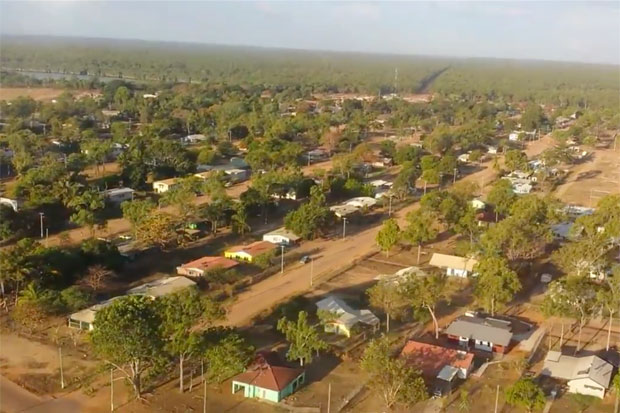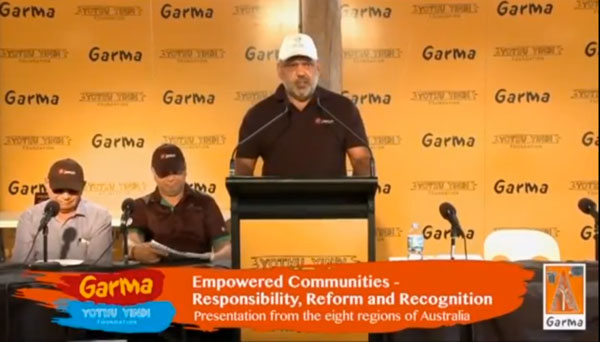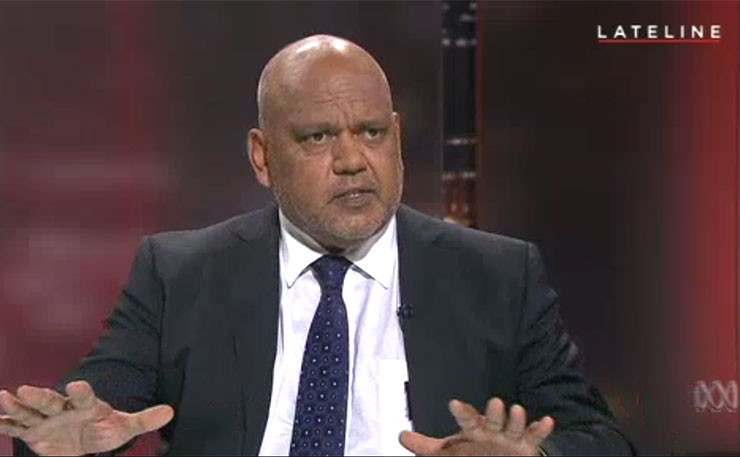Last week, the Australian newspaper ran a piece on the controversial Cape York Welfare Reform Trials, the brainchild of influential Aboriginal lawyer Noel Pearson.
According to the headline the ‘experiment’ underpinning the education reforms in three Cape York communities – the just as controversial ‘Direct Instruction’ teaching method – had “passed its first test”.
According to the Oz, the students at Pearson’s home community of Hope Vale, one of the communities to trial Direct Instruction, along with Coen and Aurukun, had “performed at levels within the upper two bands in numeracy, and nearly one in five in reading”.
This had been an improvement since before 2014, when there hadn’t been one student in the upper two bands. There was no word in the piece on the outcomes at Coen or Aurukun, other than to say that the school in Coen had recently celebrated a 100 percent attendance rate.
The small Cape community had already notched up some of the highest school attendance rates in Queensland before Pearson’s trials had even begun, but that’s an inconvenient fact for those cherry picking data to justify the expense of the trials.
While the ‘successes’ of the trials have been well-chronicled in the pages of the Oz, in the same week as this story, another report was released that painted a startling different picture.
The Dropping off the Edge Report, compiled by Jesuit Social Services Australia and Catholic Social Services Australia, presents a devastating picture of disadvantage across the nation.
It ranks different postcodes by their cumulative disadvantage across a series of indicators, from child maltreatment, criminal convictions and domestic violence, to long term unemployment, housing stress and juvenile convictions.
The report is significant for this simple fact: across the nation, the most disadvantaged postcodes are majority Aboriginal. In Queensland in particular, the outlook is depressing, if not unsurprising.
The 12 most disadvantaged communities in the state are all Aboriginal communities (with the exception of Inala, in Brisbane, which has a sizable blackfella community).
The two most disadvantaged, in fact, are two Cape York communities – Aurukun and Doomadgee.
They have another thing in common.
They are both communities subject to the expensive Cape York Welfare Reform trials, which aim to break social norms through a radical ‘tough on love’ approach to welfare.

The other communities involved in the trials are Coen, Mossman Gorge and Hope Vale.
The trials have been in place in these communities, with the exception of Doomadgee, since 2008, when both federal and state governments backed Pearson’s vision to the tune of about $96 million. Since then, both governments have funnelled millions of dollars into the trials, which ultimately goes to a population of less than 3,000 people.
Under the trials, the Families Responsibilities Commission receives notifications from relevant government agencies about school attendance, tenancy breaches, child safety issues and convictions in Magistrates Courts. The FRC-appointed commissioners can compel residents to attend a ‘conference’ to discuss the notifications, where options are discussed ranging from clients attending support services, or case management programmes, voluntary income management or compulsory income management.
The aim is to move people from ‘passive welfare’ and rebuild ‘positive social norms’.
But seven years on, it seems the only success the trials could claim has been the unbelievable ability to attract government funding, largely a result of the influence of Pearson.
In fact, the amount over the past 7 years adds up to about $146 million – and that includes the recent funding announcement by the Queensland Treasurer Curtis Pitt, who juggles this role with the Aboriginal and Torres Strait Islander Partnerships portfolio. In this year’s budget, the state would kick in a further $28.6 million over four years for trials that have still yet to produce solid outcomes.
If you look at the Dropping off the Edge Report’s section on Aurukun and Doomadgee, you would think the funding has been non-existent.
In fact, Aurukun has deteriorated significantly since the Cape York trials began in 2008 – so much so that it is now the most disadvantaged community in Queensland. But according to the Dropping off the Edge reports it wasn’t always the case. In 2007, it didn’t even make the top five.
“Two locations (Aurukun and Doomadgee) have experienced increased disadvantage between 2007 and 2014,” the report says.
“Aurukun’s deterioration is evident in a range of indicators, including: Criminal convictions (ranked 11th in 2007 and 1st in 2014); young adults not engaged in work or study (ranked 107th in 2007 and 5th in 2014) and unemployment (ranked 262nd in 2007 and 10th in 2014).”
When it comes to education, Aurukun still is ranked low in the state. For Year 3 numeracy, it was ranked 18th, for Year 9 numeracy, it was even lower – at 9th.
For young adults not engaged, the report ranked it among the top five most disadvantaged in the country.
It’s not exactly the education revolution you would expect from a trial worth millions of dollars.
It gets even more outrageous when you consider Aurukun is the community that has the most amount of funding spent on it out of the five communities. If you wade through the quarterly reports of the Families Responsibilities Commission, every quarter, Aurukun receives more funding than the other communities – sometimes even double of what other communities like Coen receives.
The trials have always been judged on their ability to end truancy, to increase school attendance rates. In Aurukun, which had some of the lowest school attendance rates in the state, there was signs of early success. There was a significant jump in 2009 at the school when school attendance jumped from 37 percent to 63 percent.
Since then, school attendance at the school has fluctuated, and there is still a problem with secondary school and students who leave for boarding school, and then return shortly after to the community, a fact acknowledged by the FRC in several quarterly reports.
In one report, the FRC raises concerns that, “They are concerned to see the future months are constructive in bringing about firstly, an acknowledgement by the Aurukun and Hope Vale communities of the serious problem of the significant number of disengaged youth under 16 years of age who neither attend any educational program or do so irregularly, and secondly that a realistic community-lead plan to implement what was foreshadowed in Quarterly Report to No 20. There has been no discernable improvement in the school attendance of those children in 2014.”
In that report the FRC noted “The communities of Aurukun and Hope Vale report a significant number of disengaged youth of high school age who have returned to community but have not engaged in an education option. These youth participate in dysfunctional behaviour and feel disengaged from mainstream society and also from their own communities.”
It prompted Greens Senator Rachel Siewert to ask in Senate Estimates in April last year “I understand that in Aurukun only 25 per cent of the Aurukun youth of high school age are attending school in Aurukun or elsewhere and that significantly better statistics on school attendance are being achieved in Bamaga without the special attention being given to Aurukun.”
The federal government at the time claimed it was because there was no high school in Aurukun, compared to Bamaga.
But it points to the very limited scrutiny that the Cape York Welfare Reform Trials has attracted, while the government spends big dollars on a seven-year experiment that doesn’t seem to be making inroads.
When Aurukun experienced the heralded jump in school attendance, there was still controversy over what it could be attributed to. Prior to the trials, there had been an injection of quality teaching, and the influence of Stronger Smarter, lead by celebrated Murri educator Chris Sarra, whose success is grounded in his work as Principle of Cherbourg school where he cut absenteeism rates by 94 percent.
Interestingly, Cherbourg was also one of the most disadvantaged communities in Queensland according to the report.
But while Aurukun is still ranked as one of the most disadvantaged communities in Australia when it comes to Year 3 and Year 9 numeracy rates, in Cherbourg, the report notes success.
“One community, Cherbourg, appears to have some success in relation to all school educational indicators (Year 3 numeracy 71st, Year 3 reading 35th, Year 9 numeracy 36th and Year 9 reading 43rd). But the report notes “at the moment this has not flowed on to post-school qualifications (ranked 4th)”.
Aurukun’s school attendance rates are also cause for scrutiny when you consider just how many notifications the FRC receives for absenteeism.
As of the most recently quarterly report, from October 2014 to December 2014, the FRC received 252 School Attendance Notices for Aurukun, and that has remained largely consistent throughout the course of the trials.
It raises concerns around the ability of the trials to fulfill the Abbott government’s mantra of getting kids to school.
The high level of unemployment in Aurukun should also raises alarm given the grand government expenditure.
As the report shows – Aurukun went from being ranked 262nd for long term unemployment in the disadvantage indicator, to 10th in 2014.
That’s a phenomenal jump. It’s also one which has been acknowledged previously by Pearson, who has told media that the trials haven’t been achieving goals in relation to unemployment.
But there’s a bigger story even in that.

The report notes that the large jump in unemployment could be due to “the cessation of the Community Development Employment Projects (CDEP), which in 2006 made up half of all positions in community”.
That is disturbing because Pearson has been a vocal critic of CDEP in the past, for failing to move Aboriginal people off welfare and into real employment.
As Indigenous Policy Expert Professor Jon Altman wrote in 2013: “A major plank of the Pearson project going back to his original treatise (Our Right to Take Responsibility) in 2000 is to shift people from passive welfare into real jobs in the real economy.
“Subsequently, in 2007 in the trial blueprint (From Hand Out to Hand Up), people participating in CDEP were represented as being on welfare and sitting on a ‘welfare pedestal’, a comfortable poverty trap that was abstractly illustrated with detailed modelling.
“Most of the 832 CDEP participants of 2007 have now been knocked off this pedestal; the crucial question is what has been their destination?”
The answer in Aurukun seems to be welfare and long-term unemployment.
Meanwhile, the trials, which seven years on are still trials, plug along soaking up government funding.
Where is the scrutiny? Where is the transparency? All we seem to get are uncritical, puff propaganda pieces in the pages of the Australian, a vocal Pearson backer.
Meanwhile, as black organisations struggle to continue in the aftershocks of the chaotic Indigenous Advancement Strategy, the Cape York Welfare Reform Trials swim a long through an ocean of government cash.
And it doesn’t seem to be reaching the people who need it most. In another five years, will Aurukun still be the most disadvantaged community in the state?
Donate To New Matilda
New Matilda is a small, independent media outlet. We survive through reader contributions, and never losing a lawsuit. If you got something from this article, giving something back helps us to continue speaking truth to power. Every little bit counts.




